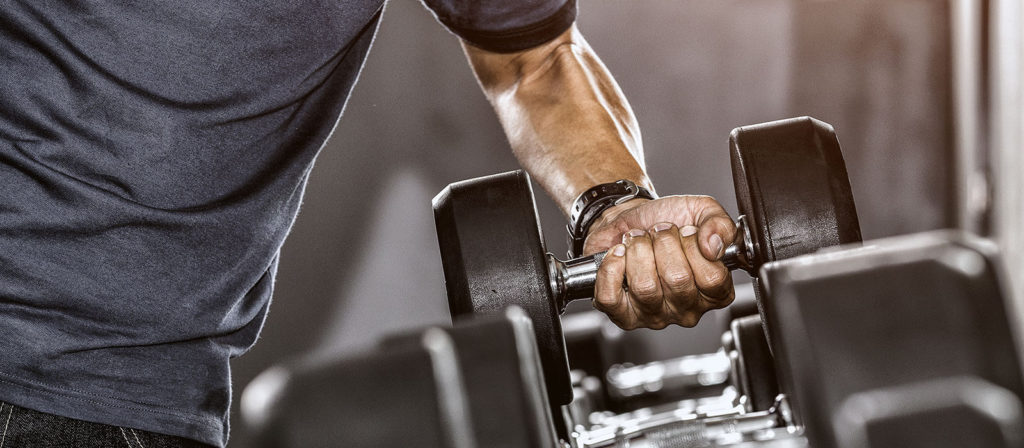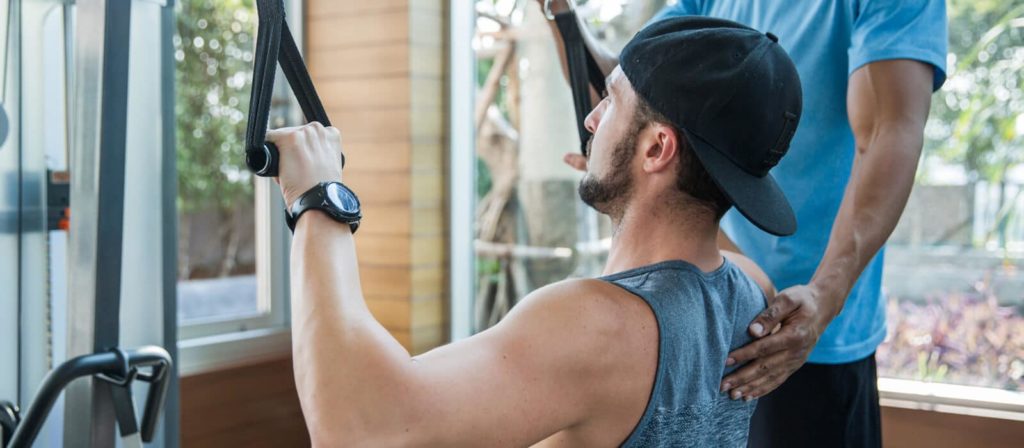One of the most frustrating things for my female clients is hitting a plateau in training. Even athletes with great work ethic, nutrition, and recovery can see results dry up. It’s specifically maddening when you’re leaving the gym fatigued or going to bed hungry after a long day of “dieting” but you aren’t seeing the payoff from your efforts in the form of progress in the mirror.
The majority of women set training goals primarily related to body composition. Whether your desired result is losing body fat, increasing muscle mass, or a combination of the two, it’s disheartening to see your hard work go unrewarded.
One of the most encouraging shifts in fitness trends over the past decade is that the industry has gotten away from the “30 minutes a day, three times a week” mentality. Over the past 10 years, we’ve debunked many other old training myths as well: Lifting weights won’t make you bulky, cardio alone won’t make you lose weight, and you can’t “spot-reduce” body fat by focusing on one area for an entire training session.
Most women now realize that if you want results, there are two universal truths: You need to work hard, and you must prioritize nutrition. Does this mean you need to spend three hours a day in the gym and eat nothing but carrots? Absolutely not, but there are a few things you need to do to maximize your results.
If you’ve found yourself stuck in a rut, chances are the cause of your plateau falls in one or more of these three categories:
1. You major in the minors.
2. Your nutrition doesn’t reflect your goals.
3. You don’t sleep, and your stress hormones are elevated.
In this post, we’ll tackle each of these causes and help you learn to overcome them.
Cause 1: You’re Majoring in the Minors
One of the biggest mistakes you can make in training is “majoring in the minors.” This means you’re spending too much time on accessory work and not enough time on the more-bang-for-your-buck exercises such as squats, deadlifts, overhead presses, and chin-ups.
When it comes to training, the best results are elicited from compound, multijoint movements. When performing these exercises, you display significantly more athletic attributes, such as strength, power, proprioception, and balance. Your training sessions also become much more efficient because you’re training multiple muscles at once instead of a single muscle at a time. Finally, your body produces a better hormonal response to compound exercises than it does to single-joint movements.
Do This, Not That: Lower Body
Many women make the mistake of spending countless hours doing seated hip abductions and hamstring curls hoping to shape their posterior chains into something an Instagram booty model would envy.
Instead, you should focus on squats and deadlifts. Squats are known as the “king of all exercises” because they activate the low back, abs, quads, hamstrings, glutes, adductors, abductors, and even the calves as a stabilizer. In fact, no lower-body muscle group can hide from this great exercise. It is a simultaneous activation of the entire body, from bracing the core to synchronously firing all the major muscles in the lower body.
Deadlifts are, hands down, the best developer of the low back, glute, and hamstring muscles because of the bar’s position in front of the body and because it’s pulled from the floor. This movement requires less quad activation, shifting the majority of the work to the back side.
Do This, Not That: Upper Body
While lat pull-downs and dumbbell lateral raises do provide benefits as accessory work, they are easier to perform and less efficient at activating multiple muscle groups as other options. The lat pull-down exercise is primarily a latissimus dorsi exercise that allows you to use momentum to complete each rep.
Additionally, athletic attributes such as balance and proprioception are removed from the equation. The dumbbell lateral raise primarily targets the anterior and middle portion of the deltoids and even has slight anterior trapezius activation, but the amount of weight you’re able to use limits the exercise and makes it inefficient by itself.
Chin-ups and overhead presses, however, are much more effective. If squatting is the king of all exercises, chin-ups are an important member of the ruling family. In terms of upper-body strength and development, there is no exercise more demanding or rewarding. This exercise requires abdominal bracing and strong lats, but switching the palms to face you allows the teres minor, elbow flexors, pectoralis minor, and even the sternal head of the pectoralis major to get in on more of the action.
Additionally, swap out lateral raises for barbell overhead presses. Not only are the anterior and middle portion of the deltoids activated, but so are the posterior delts, triceps, sternal head of the pectoralis major, and lower portion of the trapezius while stabilizing the bar overhead.
Cause 2: Your Nutrition Doesn’t Reflect Your Goals
While exercise is an important element of overall health, nutrition is the X-factor. Unfortunately, nutrition is also the biggest source of confusion when it comes to getting results. The topics of carbs, cleanses, and calories are polarizing, and every expert seems to have a different opinion.
To simplify the confusion, here are a few general guidelines to follow that have stood the test of time and produced results again and again:
1. Real foods should be the staple of your diet.
The majority of your foods should be natural, unprocessed, micronutrient-dense options such as pasture-raised meats, will-caught fish, free-range poultry, fruits, and vegetables. These foods are essential for optimal body composition and normal hormonal function due to their vital nutrients, such as omega-3 fatty acids, vitamins, and minerals.
2. Eat protein and fiber at every meal.
If you are looking to improve your body composition, a good starting point for protein consumption is roughly .7 to 1 ounce of protein per pound of body weight daily. You should also aim for 20 to 30 grams of dietary fiber daily. This ensures your body has the necessary building blocks to repair muscle tissue from working out. Plus, the fiber acts as a natural blood sugar stabilizer.
3. Eat more vegetables.
Vegetables are high in two very important things: fiber and micronutrients. Additionally, vegetables provide greater satiety than empty calories, or foods lacking micronutrient content. This means broccoli is healthier for you than potato chips not only because of the vitamins and minerals it contains, but also because it will help regulate your blood sugar and keep you feeling fuller for longer, leading to fewer snacks throughout the day.
4. Consume 0 grams of added trans fats daily.
Trans fats are man-made fats that have been directly linked to obesity, depression, and inflammation. The easiest way to avoid them is to stay away from prepackaged foods — do your shopping in the whole-food section of the grocery store instead. Stick to animal-based proteins, such as grass-fed beef and wild-caught salmon. These proteins provide you with essential omega-3 fatty acids, which have been directly linked to decreases in body fat percentages. Aim to consume a minimum of 3 grams of omega-3 fatty acids daily.
5. Follow the 80/20 rule.
The 80/20 rule is a simple way to make sure you always see a light at the end of the tunnel. There’s no need to go through life miserable and hungry — in fact, you should absolutely enjoy your food. But, as with all things in life, balance is key. I like to have my clients implement the 80/20 rule by pulling out a calendar to plan out the next 100 days. On 80 of those days, they’re not allowed any dessert or cheat meals. But on 20 days, they get to pick one cheat meal or a dessert. (Remember, these are cheat meals, not cheat days.) The 80/20 calendar is flexible, so if you planned to have a cheat meal Thursday but ended up grabbing ice cream on Wednesday, just make Wednesday one of your 20 and Thursday one of your 80.
6. Always know the source of your next meal.
In the words of Winston Churchill, “He who fails to plan is planning to fail.” Life gets in the way, and if your meeting runs late or your kids get sick, it can be tempting to just order takeout. The best way to avoid that temptation and keep your healthy eating on track is to prepare your meals. Whether you order from a healthy meal delivery service or spend a few hours cooking each weekend, having a plan in place for your meals each week will help you avoid falling victim to circumstance.
Cause 3: You Don’t Sleep, and Your Stress Hormones Are Elevated
We all know sleep is important, but the vast majority of women aren’t getting enough of it. In fact, some estimates put the number of Americans suffering from sleep deprivation at two-thirds of the population. Sleep is single-handedly the best recovery method for people who participate in regular training. In fact, sleep deprivation has been directly linked to increased likelihood of injury, decreased cognitive function, and diminished athletic performance.
Simply stated, if you want to stay healthy, maintain good mental drive and focus, and prevent performance plateaus, you need to aim for seven to eight hours of sleep per night.
One of the biggest factors affecting meaningful sleep is chronically elevated cortisol levels. Cortisol is a stress hormone secreted by your adrenal glands. Because your body is constantly trying to maintain homeostasis, once your cortisol level rises, your brain immediately sends a signal to get it back to baseline.
What is the quickest way to bring down cortisol and get back to baseline? Sugar. This is why at the end of a long, stressful day, you subconsciously want to unwind with ice cream and Oreos instead of bingeing on Brussels sprouts. However, a lifestyle of nighttime snacking will wreak havoc in the long term, leading to weight gain, insulin resistance, and other serious health issues.
To ensure your cortisol is under control and your evenings are filled with meaningful sleep, follow these tips:
1. Eat five to six meals throughout the day.
When you don’t eat, your blood sugar drops and your body releases cortisol. By consuming smaller meals more often throughout the course of the day, your blood sugar remains stable and your cortisol levels stay under control.
2. No caffeine post-workout or after lunch.
While drinks such as coffee and tea are excellent sources of antioxidants and are OK to drink in the morning or before a workout, chronic caffeine consumption elevates cortisol and prevents recovery from training. The best thing you can do after training is begin the recovery process as quickly as possible — that means lowering cortisol through a post-training mix of whey protein and carbohydrates.
The worst thing you can do is reach for another cup of coffee, which excites the nervous system and signals your body to release more cortisol. Consuming caffeine late in the day also inhibits meaningful sleep at night, leading to increased cortisol levels the next morning. This is the quickest way to compound stress levels and create more cortisol throughout the day.
3. Turn off your screens one to two hours before bed.
The blue light electronics emit wreak havoc on your body’s internal clock. The brain generally begins releasing melatonin a few hours before bedtime, with peak levels occurring in the middle of your sleep cycle. Blue light delays this release, which causes you to stay up longer, decreasing sleep length and quality. Turn off your screens and reach for a book instead, giving your brain time to wind down.
For women everywhere, the frustration of plateaus in performance and body composition is a constant battle. By recognizing the three major causes of these plateaus, you can jump out in front of the problem before it arises. There are many valuable resources available, from meal prep services to free online training information. Don’t let plateaus frustrate you to the point of quitting. Stick to it, and focus on small tweaks to help you continue your progress.
















